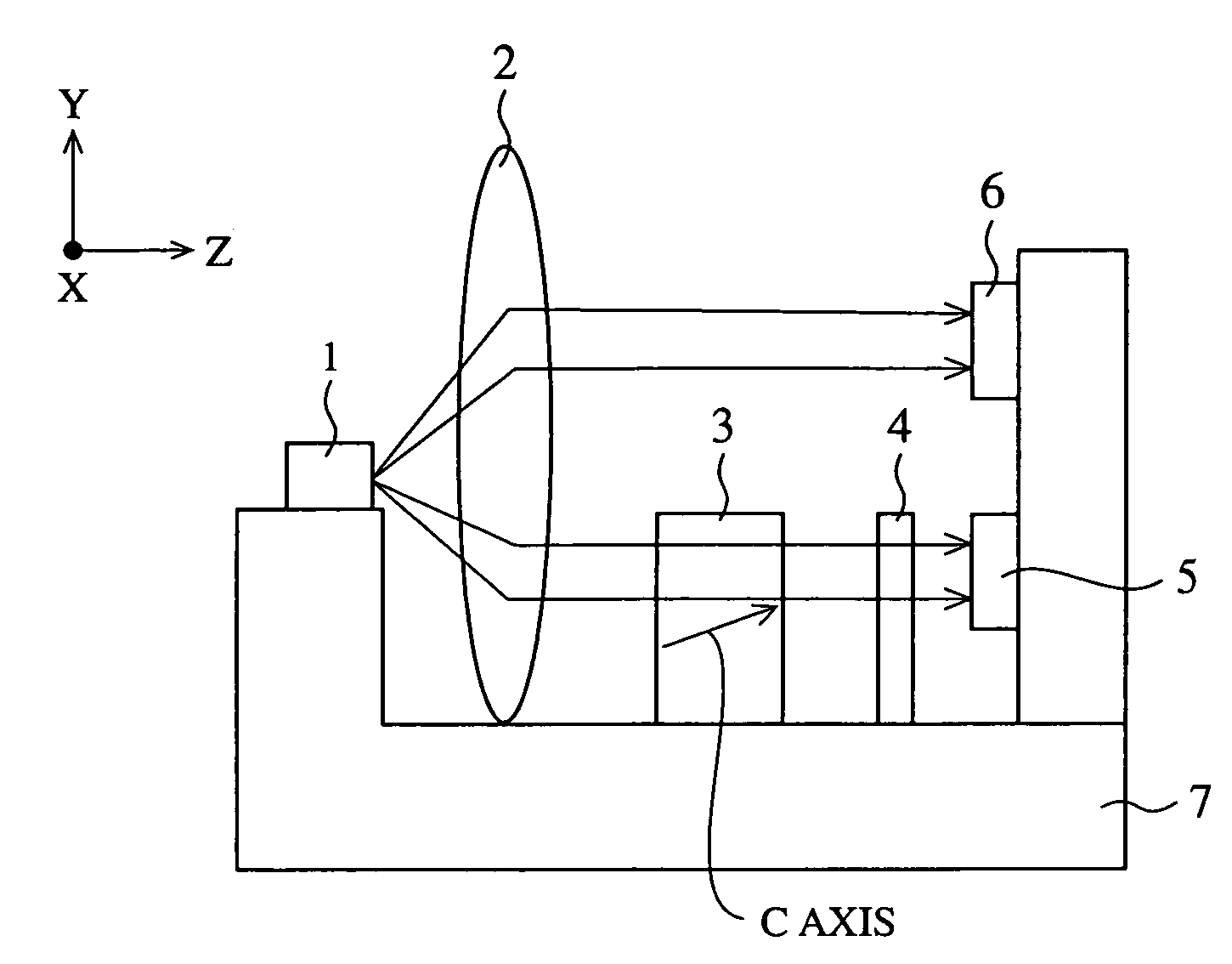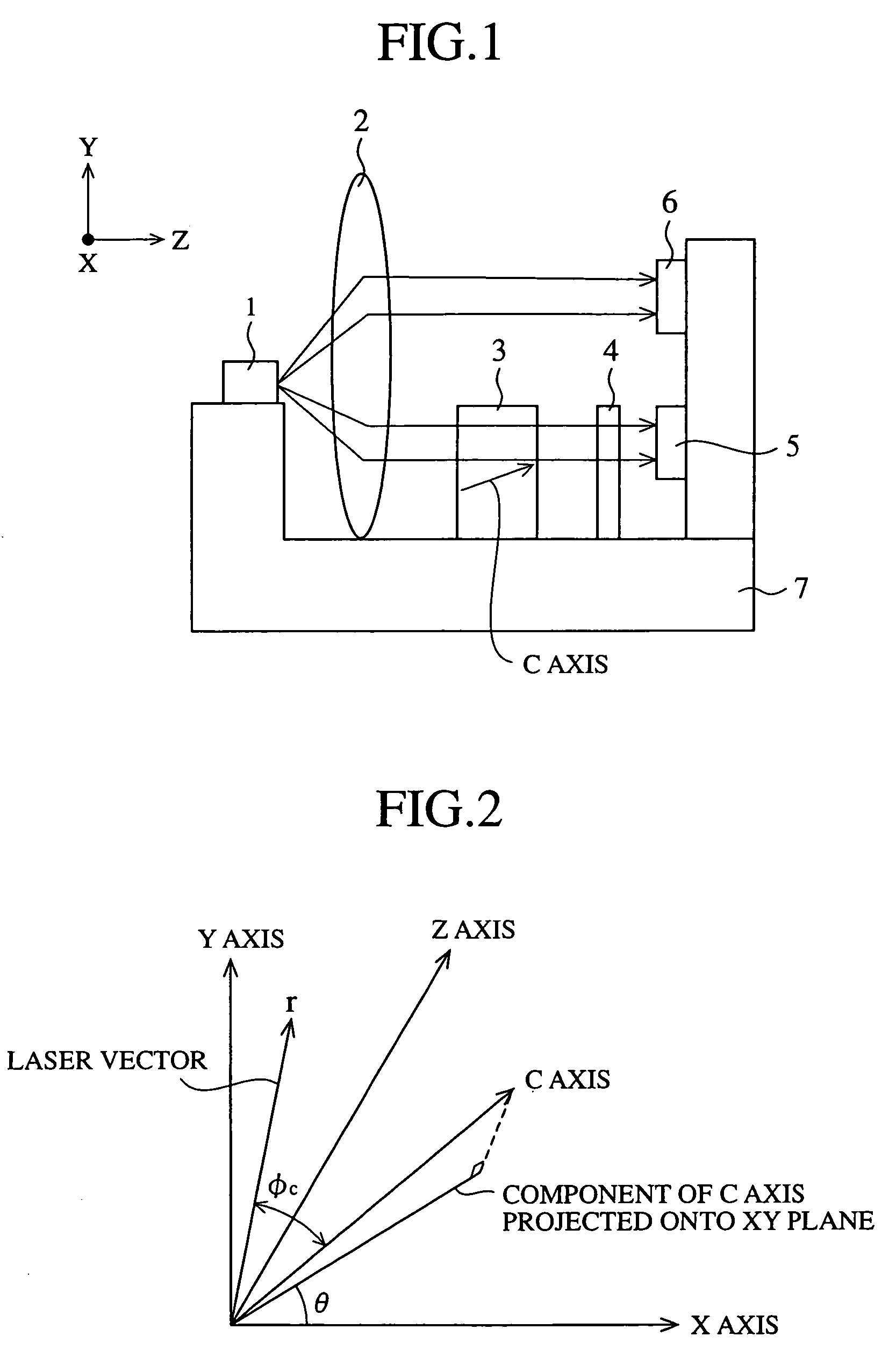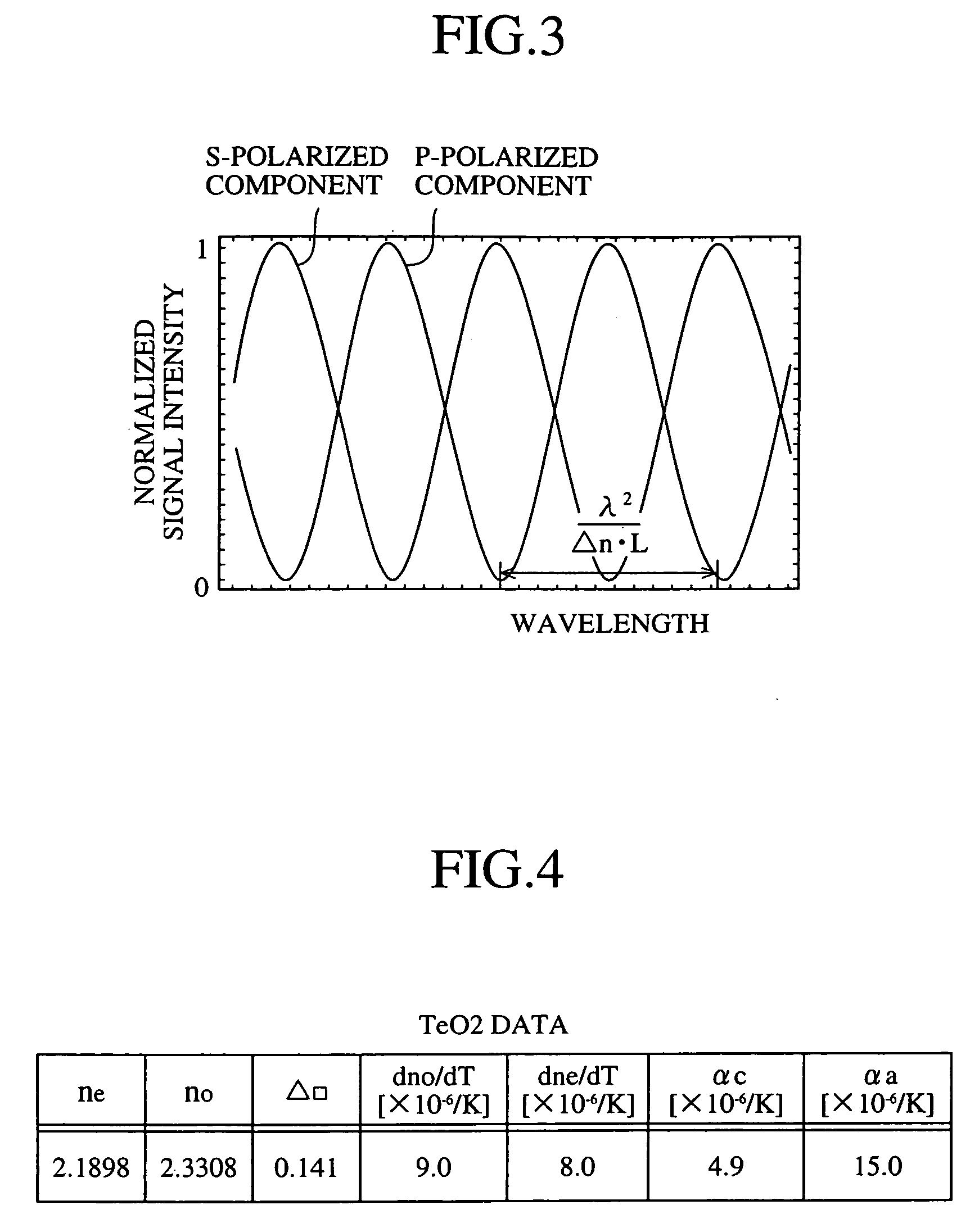Wavelength monitoring apparatus
a technology of wavelength monitoring and monitoring apparatus, which is applied in the direction of optical radiation measurement, instruments, semiconductor lasers, etc., can solve the problems of difficulty in assembling inability to carry out temperature compensation in a wide temperature range, and prior art wavelength monitoring devices cannot carry out temperature compensation in a range of operating temperatures of semiconductor lasers
- Summary
- Abstract
- Description
- Claims
- Application Information
AI Technical Summary
Benefits of technology
Problems solved by technology
Method used
Image
Examples
embodiment 1
[0177]FIG. 1 is a block diagram showing a wavelength monitoring device in accordance with embodiment 1 of the present invention.
[0178]In FIG. 1, reference numeral 1 denotes a semiconductor laser for emitting laser light (referred to as an optical signal from here on) that is polarized in a direction. For example, the semiconductor laser 1 can be a distributed feedback (DFB) laser having a grating in an active layer, a tunable laser diode that can change the wavelength of laser light emitted out thereof according to an electric current supplied thereto or temperature, or a composite-type laser (EA / LD) in which an electroabsorption element and a laser diode are disposed in series. Reference numeral 2 denotes a lens for converging and collimating the optical signal emitted from the semiconductor laser 1 so as to output the optical signal as parallel light. A line that connects the center of an emitting face of the semiconductor laser 1 and the center of the lens 2 is a laser optical ax...
embodiment 2
[0237]In embodiment 1, a uniaxial birefringent crystal is so determined and placed in the wavelength monitoring device as to meet the temperature compensation condition given by the equation (13). However, when the change dΔn(φc) / dT in the refractive index difference with respect to the temperature of the uniaxial birefringent crystal and / or the linear expansion coefficient α in the equation (13) change dependently upon the temperature of the uniaxial birefringent crystal, there is a possibility that the temperature compensation condition is satisfied at a certain standard temperature, whereas the temperature compensation condition is not satisfied at other temperatures. To solve this problem, in accordance with this embodiment, a temperature compensation condition that temperature compensation is surely implemented for the uniaxial birefringent crystal in a wide temperature range in which a semiconductor laser 1 can operate is newly found, and the temperature compensation condition...
embodiment 3
[0267]In accordance with this embodiment, there is provided a wavelength monitoring device that can adjust the wavelength discriminating characteristics of a uniaxial birefringent crystal and a polarizer according to a desired reference wavelength.
[0268]FIG. 25 is a block diagram showing the wavelength monitoring device in accordance with embodiment 3 of the present invention. The wavelength monitoring device in accordance with embodiment 3 of the present invention has the same components as those of the wavelength monitoring devices of embodiments 1 and / or 2 which are designated by the same reference numerals, and the explanation of those components will be omitted hereafter.
[0269]Reference numeral 31 denotes a uniaxial birefringent crystal. This uniaxial birefringent crystal has a crystal cut-out surface for receiving an optical signal, the cut-out surface being parallel to an xy plane, and has a C axis oriented in a direction determined by inclining a vector on a y axis in the xy...
PUM
 Login to View More
Login to View More Abstract
Description
Claims
Application Information
 Login to View More
Login to View More - R&D
- Intellectual Property
- Life Sciences
- Materials
- Tech Scout
- Unparalleled Data Quality
- Higher Quality Content
- 60% Fewer Hallucinations
Browse by: Latest US Patents, China's latest patents, Technical Efficacy Thesaurus, Application Domain, Technology Topic, Popular Technical Reports.
© 2025 PatSnap. All rights reserved.Legal|Privacy policy|Modern Slavery Act Transparency Statement|Sitemap|About US| Contact US: help@patsnap.com



